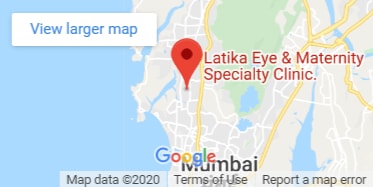- Glasses fogging up with face mask - June 29, 2020
- Lifetime Experience - January 26, 2018
- Best Message In Hindi - January 14, 2018
Congenital nasolacrimal duct obstruction is a common condition in infants and children.
Congenital Nasolacrimal Duct Obstruction
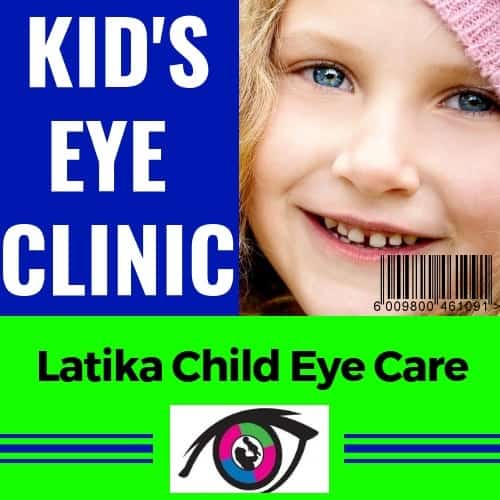
What causes nasolacrimal duct obstruction?
Nasolacrimal duct obstruction in children occurs due the failure of a membrane at the end of the tear duct (valve of Hasner) to open normally at or near the time of birth.
Other important cause of blocked tear ducts in children is a developmental anomaly called as Absent puncta.
What happens if nasolacrimal duct is blocked?
If nasolacrimal duct is blocked,your eyes will water continuously and one has increased risk of eye infections and inflammation.
What does watery eyes indicate?
Common causes of watery eye are,
irritation or inflammation of the surface of the eye,eyelash and eyelid problems, allergies, dry eye, CNLDO, glaucoma,corneal diseases, corneal infection,foreign body,chemical injury and the list is endless.
What are the symptoms of blocked tear ducts?
Signs and symptoms of a blocked tear duct are as follows,
Mucus or pus discharge from the lids and surface of the eye
Excessive tearing
Painful swelling near the inside corner of the eye
Crusting of the eyelids
Redness of the eye
Recurrent eye infection
Eye inflammation
Blurring of vision
Pediatric ophthalmologist , pediatric eye specialist in Mumbai Dr Manish Shyamkul is an expert and skilled child eye specialist who specializes in children eye problems and diseases.
Call Now and Book your appointment for the treatment of Congenital nasolacrimal duct obstruction of your child at LATIKA CHILD EYE CARE AND SQUINT CLINIC MUMBAI – eye and maternity clinic Mumbai.

Congenital nasolacrimal duct obstruction causes excessive watering with or without mucus discharge from the eyes of infants and children.
Excessive watering and mucoid white discharge,or purulent discharge from the eyes occurs due to the blockage of the nasal lacrimal duct system.
20% children less than one year of age are affected by this condition called as nasolacrimal duct obstruction.
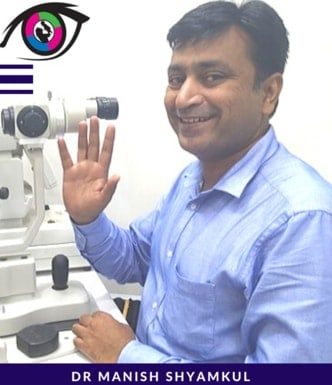
Majority of the cases get better and the condition is resolved without surgery during the first year of life.
Different modalities for treatment of Congenital nasolacrimal duct obstruction are as follows,
- Conservative management,
- Lacrimal massage,
- Probing and syringing,
- Nasal turbinate fracture,
- Endoscopic procedures like stents,
- Balloon dilatation,
- Endoscopic Dacryocystorhinostomy,
- Conventional surgical dacryocystorhinostomy.
What is congenital nasolacrimal duct obstruction?
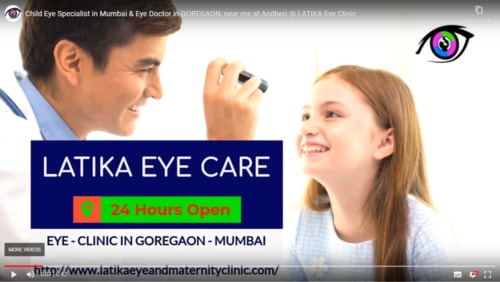
Congenital nasolacrimal duct obstruction is a common condition present in children and infants during the time of birth.
Please consult your pediatric ophthalmologist in Mumbai for the treatment of your children’s eye problems.
What is congenital Dacryocystitis?
Congenital dacryocystitis is a condition where infection or inflammation of the Lacrimal duct system occurs due to the blockade of the duct system and due to the retained excretions from the conjunctival sac.
This condition usually occurs because of the failure in the drainage of tears through the lacrimal duct system due to destruction.
As a result of this, children presents with watery Eyes due to overflow of tears also called as Epiphora.
Will a blocked tear duct fix itself?
yes most of the congenital blocked tear duct spontaneously opens up as the development of the Lacrimal duct system matures.mostly by the end of first tear of life the block opens up spontaneously.In case if the block persists then it must be treated by pediatric ophthalmologist of your child.
Diagnosis of Nasolacrimal duct obstruction
If you wish to learn about anatomy and embryology of nasolacrimal duct,than you can read this section, other wise you can skip this section and read further.
Further you can read –
- Clinical signs and symptoms of congenital nasolacrimal duct obstruction
- Diagnosis of congenital nasolacrimal duct obstruction
- Differential diagnosis of congenital nasolacrimal duct obstruction
- Medical treatment of congenital nasolacrimal duct obstruction
- Surgical treatment of congenital nasolacrimal duct obstruction
- Management of congenital nasolacrimal duct obstruction
What causes blocked tear ducts in adults?
Causes of blocked tear ducts in adults are, infection of tear duct system, infection of nasal passages, injury or trauma to the eye,and tumor
What procedure is performed to open a blocked drainage system for tears?
Obstruction in the tear drainage system requires tear duct surgery, to unblock the nasolacrimal duct. This tear drainage surgical procedure is called a dacryocystorhinostomy (DCR). Dacryocystorhinostomy DCR surgery is a surgical procedure in which a new passageway is created between between the eye and nose.
Nasolacrimal duct obstruction in children
Embryology and anatomy
Nasolacrimal duct anatomy
The beginning of the lacrimal drainage system development occurs during the fifth week of gestation in the form of a crease in the frontonasal and the maxillary processes at this stage it is called as naso lacrimal Groove.
A solid cord of ectodermal tissue separate itself and enters this groove.
Canalization occurs in this tissue this is called as nasolacrimal sac lacrimal duct. similar is the process by which the formation of lacrimal canaliculi also occurs.
Can a blocked tear duct get infected?
The blocked tear duct gets infected due to the retention of excretion where bacteria collect in the ducts or the Lacrimal sac.
How long does Dacryocystitis last?
Dacryocystitis must be treated as early as possible,otherwise chances of complications increase. acute dacryocystitis can lead to fever and pus from the eye.
Antibiotic treatment usually resolves the infection within a few days.
How is tear duct surgery performed?
Tear duct surgery can be performed in two ways,endoscopic and conventional surgery
Dacryocystorhinostomy DCR surgery is a surgical procedure in which a new passageway is created between between the eye and nose.
The Lacrimal sac is then joined directly onto the inside of the nose. In some cases a stent may be inserted into the tear duct.
How long is DCR surgery?
Dacryocystorhinostomy DCR surgery can take approximately 45 to 60 minutes under local anesthesia in operation theatre
Can you wear contacts after DCR surgery?
yes , after a successful DCR [Dacryocystorhinostomy] surgery you can definitely wear CONTACT LENS, after taking permission from you eye consultant.
The process of canonization begins around the eighth week of gestation and continues till the birth. The process of canalization occurs at the same time about the system. The opening of the lacrimal duct at the distal end near the valve of Hasner is not patent at the time of birth.
Tears are produced by the lacrimal glands. The flow of the tears occur from the lacrimal gland,cross the eye and then they enter the upper and the lower eyelid punctum, than travel through the canaliculi to the lacrimal sac and then into the nose through the nasal lacrimal duct .
The presence of orbicularis occuli muscle over the lacrimal sac area creates pumping action and is also called as lacrimal pump which facilitates the flow of tears through the lacrimal system into the nose.
How long does a blocked tear duct last?
Most cases of blocked tear ducts will spontaneously resolve by 12 months of age. But, if the blockage persists than treatment from your pediatric ophthalmologist is recommended.
Can blocked tear ducts cause puffy eyes?
Blocked tear duct causes watery eyes,and in event of infection it may lead to pain and swelling in eyes.
Clinical symptoms of nasolacrimal duct obstruction in children
Approximately 5% of the infants have some kind of nasolacrimal duct obstruction at the time of birth.
Usually the cause is almost always present at the distal end of the nasal lacrimal duct that is around the area of valve of Hasner. The main symptom is Epiphora that is constant watering of Eyes which results from the overflow of tears due to blockage of the duct.
This produces a nice warm environment for the multiplication of the normal flora bacteria in lacrimal sac and produces clinical condition called as Dacrocystitis.
congenital nasolacrimal duct obstruction dacryostenosis and dacryocystocele
Is tear duct surgery painful?
Tear duct surgeries are performed under local or general anasthesia.so you will not have any kind of painful surgical experience.in modern times as the surgical manipulation is less so post operative pain is not a problem and advantage is early rehabilitation.
Dacryocystitis results in continuous watering, matting of eyelashes, discharge in Eyes and retrograde reflux of mucopurulent material through the when pressure over the lacrimal sac reason is applied.
Most of the children will have either all the three mentioned clinical symptoms or some of them might present with only one of them.
But one must remember,
If child is presenting only with watering of Eyes , then a differential diagnosis of canalicular atresia and glaucoma must always be considered.
In congenital nasolacrimal duct obstruction usually there is no photophobia or intolerance to light or any other signs of irritation.
If a child having photo phobia or any other signs of irritation then the diagnosis of glaucoma or corneal disease must be considered.
In severe cases, few children may develop erythema, breakdown of the periocular skin, lacrimal abscess and dacryocystoceles.
Diagnosis and differential diagnosis of nasolacrimal duct obstruction in children
Congenital nasolacrimal duct obstruction is one of the most common cause of watery Eyes and periocular discharge in infants.
The presence of the watery eyes and periocular discharge helps to confirm the diagnosis.
It is extremely important to rule out a very close differential diagnosis of congenital glaucoma in childrens who presented with watery eyes.
The Hallmark of congenital glaucoma is as follows,
- Corneal enlargement,
- Haab striae,
- Enlarged globe,
- Increased cup:disc ratio, and
- Elevated intraocular pressure.
Other possibilities of watery Eyes are primary corneal disorders, conjunctivitis and corneal infection.
Treatment of congenital nasolacrimal duct obstruction in children
How do you treat nasolacrimal duct blockage?
Treatment of nasolacrimal duct blockage is one of the following ways ,depending on age of the child.
different modalities of treatment are,
tear duct massage, topical antibiotic eye drops, tear duct probing, balloon tear duct dilation, and/or tear duct intubation.
The process of canalisation of the lacrimal system continuous for few months after birth and obstruction of the duct opens spontaneously.
During the first year of the life only a conservative management is all that is required.
In case of infection topical antibiotics are prescribed for few days. when there is no infection only lacrimal massage is advised.
Lacrimal massage should be done with proper technique in the correct way. Different types of Lacrimal massage have been documented in the literature.
The most common being pressure application over the lacrimal sac area.
Usually this works during the first year of the life, if the obstruction doesn’t open up during the first year of life it is unlikely that it will open up henceforth and so native measures are advocated.
Congenital Nasolacrimal duct obstruction- Surgical treatment
After the first year of life mostly the conservative measures fail and further delay not advisable.
Nasolacrimal Duct Probing
In the second year of life, paediatric ophthalmologists usually advise probing and syringing.
Probing in congenital dacryocystitis
This probing and syringing is performed in operation theatre under general anaesthesia. It is a simple procedure, in which the obstruction is overcome help of probes which are inserted through the lacrimal papilla. This is a non invasive procedure and gives very good results if perform timely during the second year of life.
At times one or the repeated probing and syringing procedures may be required if the watering continues after the initial procedure.
If the procedure fails after multiple probing answering attempts the only way to address failure of probing and syringing is to perform dacrocysto-rhinostomy procedure the third year of life.
This is a major surgical procedure which involves bypassing the obstruction by creating another opening In the nasal area.
In Modern Times conventional dacrocysto-rhinostomy is replaced by endoscopic dacrocysto-rhinostomy procedure which is less invasive and allows early rehabilitation of the patient.
Other alternative methods
- Stents,
- Balloon dilatation,
- Nasal turbinate fracture,
- Nasal endoscopy,
- Dacrocysto-rhinostomy
Child Eye Care in Mumbai and Child Eye Doctor near me
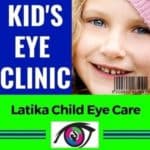
Child Eye Care Doctor in Mumbai – one of the best child eye care hospital near me in Mumbai is Latika Children Eye Clinic & Squint Clinic ( Latika Eye & Maternity Specialty Clinic). Dr Manish Shyamkul pediatric eye specialist,ophthalmologist & child eye care doctor is one of the best child eye specialist in Mumbai. Read more at LATIKA Children Eye Clinic & Squint Clinic
(Latika Eye & Maternity Specialty Clinic.) https://www.latikaeyeandmaternityclinic.com/child-eye-care
Child eye doctor in Mumbai – Book appointment
LATIKA Children Eye Clinic and Squint Clinic
( Latika Eye & Maternity Specialty Clinic )
Get in Touch-
kalpaka CHS bldg No.1, Shop No.3, Road No.16,Siddharth Nagar Opposite Chota Jain Mandir, near Siddhrath Hospitalnear joggers park near jensava bulding,Siddharth Nagar,Goregaon West,Mumbai, Maharashtra 400062
Hours:Open 24 hours
Phone: 075066 43458
